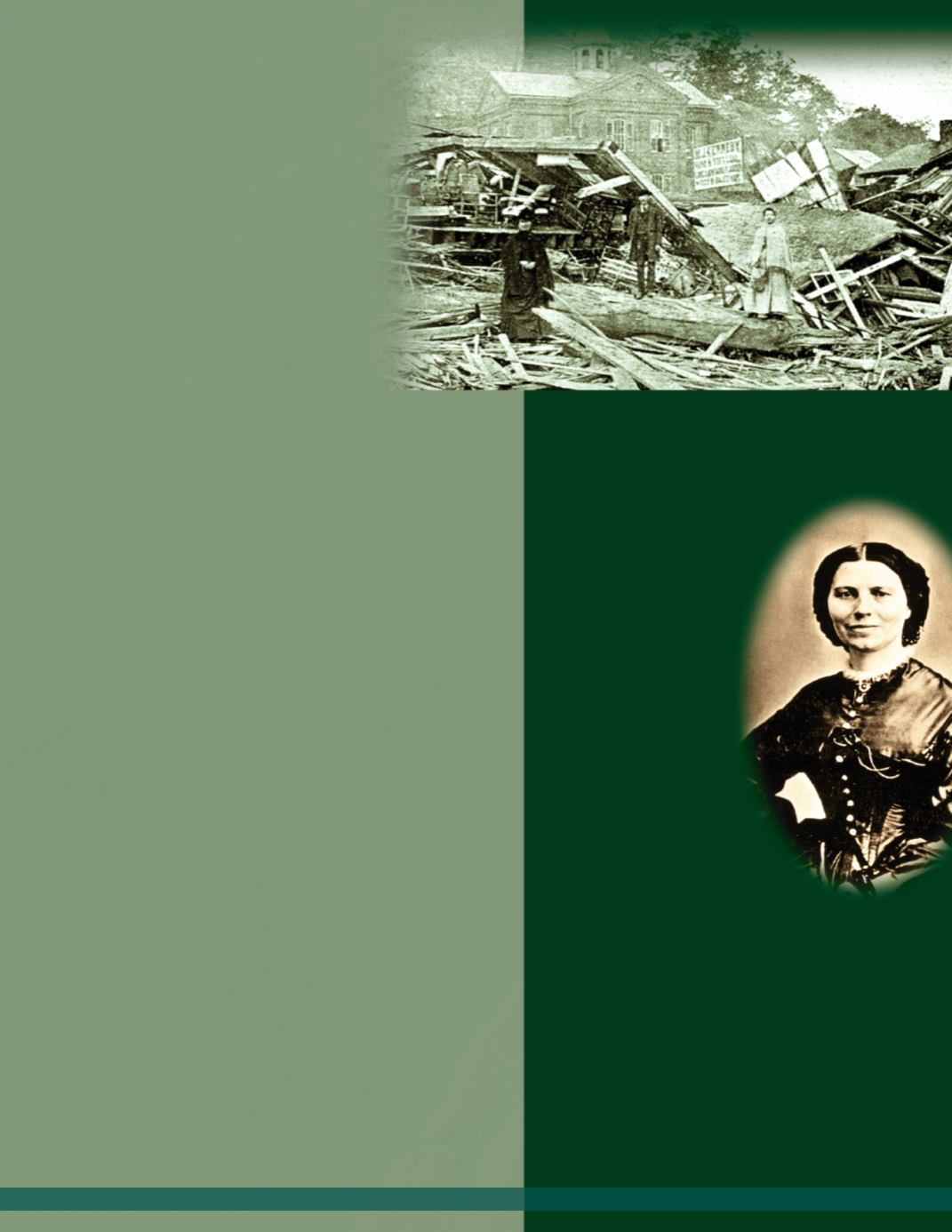
C
LARA
B
ARTONAND
T
HE
J
OHNSTOWN
F
LOOD
Clara Barton
had
founded the American
Red Cross in 1881
as a chapter of the
International Red
Cross. At that time
the Red Cross was
primarily a
battlefield relief
organization. Barton
felt strongly that the
Red Cross could also
provide relief during
peacetime disasters,
and the Johnstown Flood
provided this opportunity.
Barton and the Red Cross were
some of the first outsiders to arrive in
Johnstown. They worked tirelessly for more
than fivemonths. They helped to build
housing for displaced townspeople and
warehouses to store themany supplies
the devastated community received.
This was the first major peacetime
effort of the American Red Cross, an
organization that is now synonymous with
emergency assistance, disaster relief, and
community service in the United States.
The Tragedy of Johnstown
During this time of great industrial growth,
the city of Johnstown experienced one of our
country’s greatest disasters. Johnstown was
a successful city and our nation’s largest
producer of iron and steel rails. OnMay 31,
1889, heavy rains caused the South Fork
Dam14miles away to overflow. It was an
earthen dambuilt in the 1840s for theMain
Line Canal, but upkeep of the damhad been
neglected over the years.
At 3:10pm the damgave way and a 450-acre
lake emptied in 36minutes. A 40-foot wave of
water went rampaging through a narrow valley
sweeping away everything in its path, smashing
the town, factories, and big locomotives as
though they were toys. In tenminutes, 2,200
people were killed, 1,000 weremissing, and
millions of dollars in damage was caused.
The clean-up of Johnstown required amassive effort. More
than 25,000 survivors needed to be fed, clothed, housed, and
cared for. It was estimated that asmany as 10,000 relief
workers poured into Johnstown to rebuild the city. In just 14
days, the Pennsylvania Railroad had rebuilt 20miles of track
and bridges. By July 1, stores opened onMain Street. Although
the Cambria iron and steel factories were heavily damaged, they
returned to full production within 18months after the flood.
Problem3: Meeting the Needs of an
Industrial Society
With the growing numbers of people in the towns and cities
of Pennsylvania, new needs arose. Newways had to be created
tomeet these needs. For example, people who worked 12 hours
a day at the factory or mill did not have time to raise or grow
their own food.
In 1869,
Henry J. Heinz
created one solution. His new food
preservingmethod placed cooked food in tin cans and glass jars
that could store for longer periods of time. Grocery stores
became a popular way for city people to buy this preserved food.
Heinz established the H.J. Heinz Co. in 1888. He built his canning
factory in Pittsburgh, and came up with the slogan 57 Varieties in
1896. He prided himself in treating his workers well and running
a clean factory. Today, the Heinz’s company sells its products to a
global market in 200 countries.
JohnWanamaker
, a Philadelphian, opened the world’s first
department store in 1876. For the first time, many different
kinds of goods could be bought in one store. Wanamaker
pioneeredmany
innovations
in
retail
selling. His department
store was the first with a telephone, and had the first lights,
the first price tag, the first sale of items, and perhaps the first
elevators. He also promoted honest advertising, allowed
products to be returned, and offeredmoney-back guarantees.
FrankW. Woolworth
opened the first successful “five and
dime” in 1881 in Lancaster, and later, one in Scranton. The
idea of paying nomore than ten cents for items became a
huge success. Withmore than 1,000 stores at the time of his
death in 1919, Woolworth’s was the largest department store
chain in the world.
96
Understanding Pennsylvania


